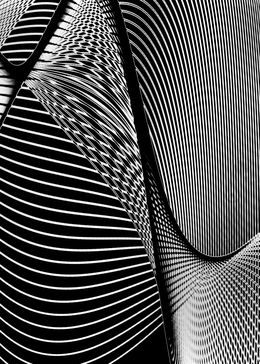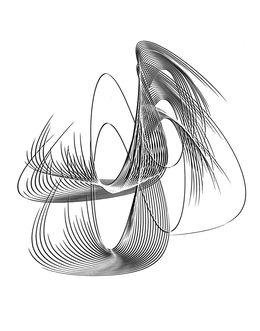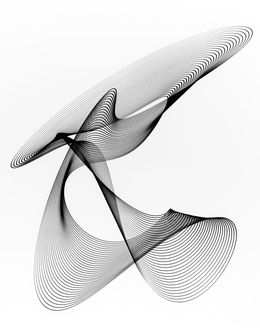
Rhythmogramm 183A
Heinrich Heidersberger
Photography - 59.4 x 42 x 0.1 cm Photography - 23.4 x 16.5 x 0 inch
$1,527
Heinrich Heidersberger, born in Linz, Austria, in 1912, discovered his passion for art and creativity at an early age. After graduating from high school in Linz in 1925 and abandoning his architecture studies in Graz, he began his journey through the world of photography.
His career took him through various cities such as Berlin, Braunschweig, and Wolfsburg, as well as international centers of creativity such as Paris, Denmark, the Netherlands, and the USA. Inspired by Fernand Léger in Paris, he began photography in 1928 and became a full-time photographer in 1929.
Heidersberger's work included travel reports for renowned magazines such as Life Magazine, where he documented the Mediterranean, the Caribbean and the Brussels World's Fair. His work was not limited to travel; in 1938 he took over the management of the photo department of the Reichswerke Hermann Göring in Salzgitter.
After the Second World War, Heidersberger opened his own photography studio in Braunschweig and published a remarkable photo book about the war-torn city in 1954. In the 1950s and 1960s, he established himself as a renowned industrial and architectural photographer, working for well-known magazines such as the "Illustrierte Zeitung" and the "Architectural Digest".
His love of experimentation led to groundbreaking developments such as the light cannon of 1949, which enabled him to show naked women in a series for the "Stern" magazine. Another achievement was his pendulum machine, which won him a silver medal at the Milan Triennale in 1957 and was used to create photographic rhythmograms.
Heidersberger spent most of his life in Wolfsburg, where he settled in 1961 and set up his studio in Wolfsburg Castle. There he founded the Schloßstraße 8 artists' group, which no longer exists but continues to carry on his creative vision. In 2003 he was made an honorary citizen of Wolfsburg for his life's work and his contribution to art.
Heinrich Heidersberger passed away in 2006, but his legacy as an innovator and pioneer in photography lives on. His works remain an inspiration for future generations of photographers and artists worldwide.

Photography - 59.4 x 42 x 0.1 cm Photography - 23.4 x 16.5 x 0 inch
$1,527

Photography - 59.4 x 42 x 0.1 cm Photography - 23.4 x 16.5 x 0 inch
$1,527

Photography - 30 x 24 x 0.1 cm Photography - 11.8 x 9.4 x 0 inch
$9,499

Photography - 24 x 18 x 0.1 cm Photography - 9.4 x 7.1 x 0 inch
$6,559

Photography - 40 x 30 x 0.1 cm Photography - 15.7 x 11.8 x 0 inch
$12,440
Choose your preferences
The art is yours
The art is yours